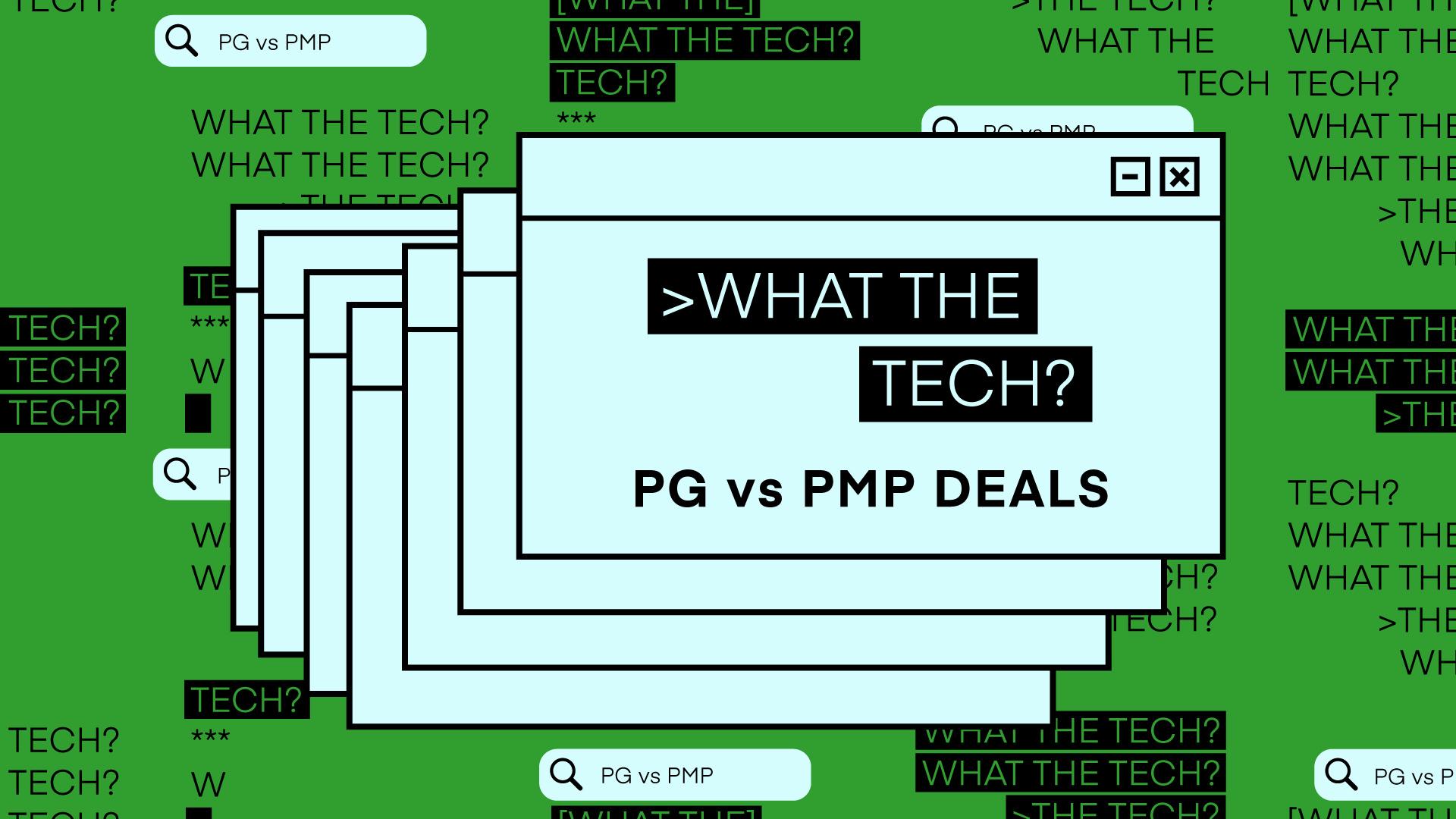What the Tech are PG vs. PMP deals?

Illustration by Ollie Catton / The Current
Back in the good old days of digital advertising (before the 2010s), buying and selling ad space often involved using touch-tone phones and fax machines. Agencies would call up the ad salespeople at publishers, negotiate a rate for a campaign and then fax over an insertion order (a fancy word for a contract) to make the deal official.
An entry-level, Zoomer media buyer would probably scoff at how inefficient this system seems in retrospect, and they wouldn’t be wrong — it was an inefficient system, especially considering the entire point of digital media was to deliver content to consumers more quickly and easily.
Programmatic advertising automated this manual process, as it allowed advertisers, or their agencies, to fire up their laptops and execute campaigns with a few keystrokes using any number of ad-buying platforms, such as an ad exchange or demand-side platform.
For some, though, the advent of programmatic didn’t change the process, but just shifted it from fax machines to computers. Therein lies the genesis of programmatic guaranteed.
OK, so what’s programmatic guaranteed?
Programmatic guaranteed is a simple process that automates media buys between advertisers and publishers. An advertiser wants to run a campaign on a publisher’s site, and the two sides execute the transaction through a software platform. Simple.
Programmatic guaranteed is essentially the same as the insertion order method mentioned earlier, only buyers are using a computer instead of a fax machine. Buyers commit to an ad without knowing exactly who the audience is and when the ad will be displayed. They’re paying the same rate, regardless of quality. But it’s guaranteed. It’s locked-in.
However, one of the many benefits of programmatic is that it allows brands to use data to evaluate impressions across entire networks of publishers at the same time and buy the ad space that best meets their needs, at any point in time. This all happens through a process known as real-time bidding.
Okay, I’ll bite. What’s real-time bidding?
Real-time bidding, often referred to as RTB or decisioned media, is a form of programmatic advertising in which ad impressions are purchased, you guessed it, in real-time using data.
That is, publishers make their advertising inventory available in an ad exchange or on a private marketplace, where brands can use data to understand which ad impression is of the most value to them and bid on those ad impressions in real-time. As with any auction, the highest bid wins. Whichever brand is willing to pay the most for that ad impression gets to fill that available ad slot.
Wait a minute. You mentioned private marketplace, or PMP, deals. How are those different from PG deals?
A PMP is a private marketplace that’s exclusive to only select advertisers. In other words, publishers can invite a smaller group of trusted brands and advertisers to buy their inventory. Unlike a PG deal, it’s not a deal between two parties, but one made within a predetermined marketplace of other advertisers. Think of it as a VIP section of a huge fruit and vegetable market where buyers have access to premium produce so they have a better chance at picking the best cherries. Get it?
One advantage of a PMP deal is that it retains some of the exclusivity of the PG, or direct, deal but it is automated via real-time bidding. From a publisher’s point of view, PMP deals can allow more control over which ads run against their content than in an open marketplace, as well as allowing advertisers direct access to their first-party data. At the same time, brands can likely feel more confident about meeting their brand safety goals than they would in that open auction market. VIP indeed!
How does real-time bidding impact the CPM?
Real-time bidding evokes images of a trading floor, with eager media buyers hurriedly placing their bids the moment inventory comes available, but it doesn’t work like that. With RTB, a brand will establish a set parameters for a digital media campaign (e.g. “I want to advertise to X audience, on Y websites, and I’m willing to pay Z cost per mille to reach them”), usually via a demand-side platform. Once inventory that satisfies that criteria is made available, the ad buy is executed. The process takes milliseconds, which is much more efficient than sending a fax.
RTB enables media buyers to use every data point available to purchase an impression that is going to be the most valuable in driving awareness and demand for their business. In other words, it ensures brands are paying the right price for the value they are seeking.
What kind of data helps buyers make these decisions? It’s first- and third-party data, but that’s another WTT.
Subscribe to The Current
Subscribe to The Current